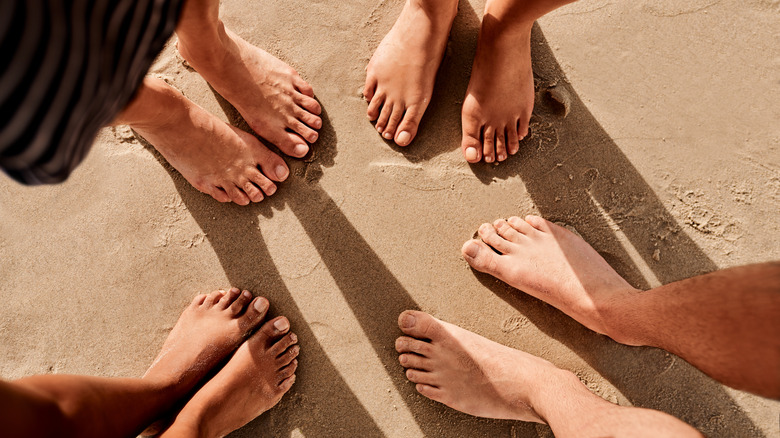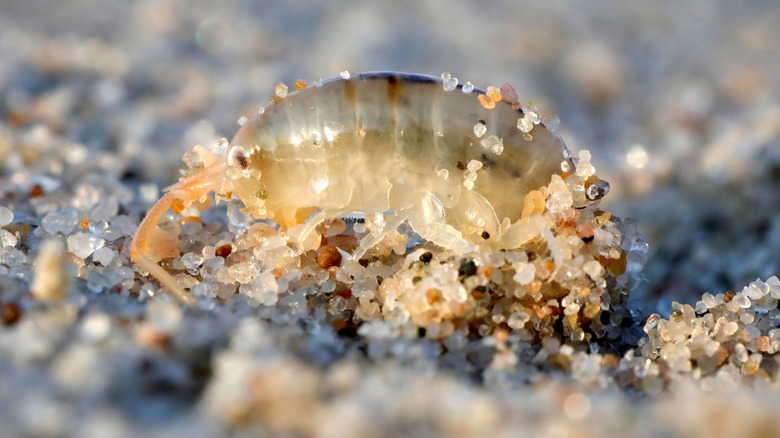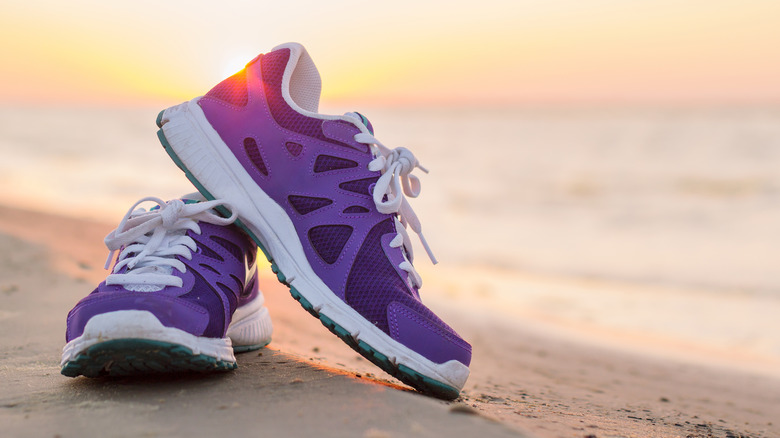Why Your Feet Are Covered In Bug Bites After A Day At The Beach
After hours spent at the beach, the sun is now setting and you're trekking your way back to the car carrying your folding chair, umbrella, and towel tucked up under your arm. No doubt you're covered from head to toe in sand and salt; but, if you look down, you might notice your feet are covered in something else too — tiny, red bug bites.
If your ankles are now home to clusters of small, itchy bumps, you may have been dined on by a sand flea. However, these little pests are not so much insects as they are crustaceans, reports Prevention. Also known as "sand hoppers," sand fleas (ironically) cannot jump all that far. For this reason, you're not likely to find any bites on your upper body. Additionally, since they only venture out at night to feed, sand fleas tend to stay tucked away below the sand or nestled within washed-up seaweed clumps during daylight hours. So, you're also most likely to be bitten by these creatures after the sun goes down.
Although their bite can be quite painful, these crustaceans are generally harmless and the bites usually take care of themselves within a week as long as you keep the area clean from germs. However, there is another type of sand flea that can pose more significant health risks.
What is sand flea disease?
While the term "sand flea" is often used to reference any kind of jumping, beach-dwelling critter, a real sand flea is not a crustacean at all, but a species of flea known as Tunga penetrans (via Cleveland Clinic). Rather than simply bite, female sand fleas can embed themselves into human skin, potentially leading to sand flea disease. The infection is primarily characterized by excessive inflammation and lesions but one can also experience nail loss, peeling, scarring, and trouble walking. The World Health Organization (WHO) further points out that people's sleep health and school performance are often affected since children tend to be at higher risk of infection.
Because sand fleas are not commonly found in the U.S., the populations most affected by sand flea disease are those in resource-poor countries. Transmitted through direct skin contact with the ground, sand flea larvae can be found in soil. Once embedded in the skin, the sand flea becomes much larger, increasing by more than 2,000 times in size. Many poverty-stricken countries face substantial barriers in addressing sand flea disease among the public due to a lack of financial resources and the fact that it is often overlooked by both government and health officials.
How to minimize your chances for sand flea bites
When it comes to those pesky — yet harmless — beach-dwelling crustaceans that we often call "sand fleas," know that these bites often heal on their own in a matter of days. To reduce the likelihood of getting bitten in the first place, plan your beach visits accordingly. Avoid the water's edge after the sun goes down or at the crack of dawn, as sand hoppers primarily come out at night, reports Prevention. Additionally, in the event of torrential rain or thunderstorms, you may want to hold off on a beach visit for a moment, as this kind of weather tends to draw out these critters, making you far more likely to get dined on.
Alternatively, when it comes to actual sand fleas, know that mild cases of sand flea infection often go away with time as the fleas eventually die off (via Cleveland Clinic). However, seek emergency care should you develop any open skin wounds.
To minimize your chances of sand flea infection, consult with your physician about potential insect-borne disease risks and prevention efforts prior to international travel. Additionally, be sure to routinely clean your feet and opt for covered footwear instead of sandals or going barefoot.



